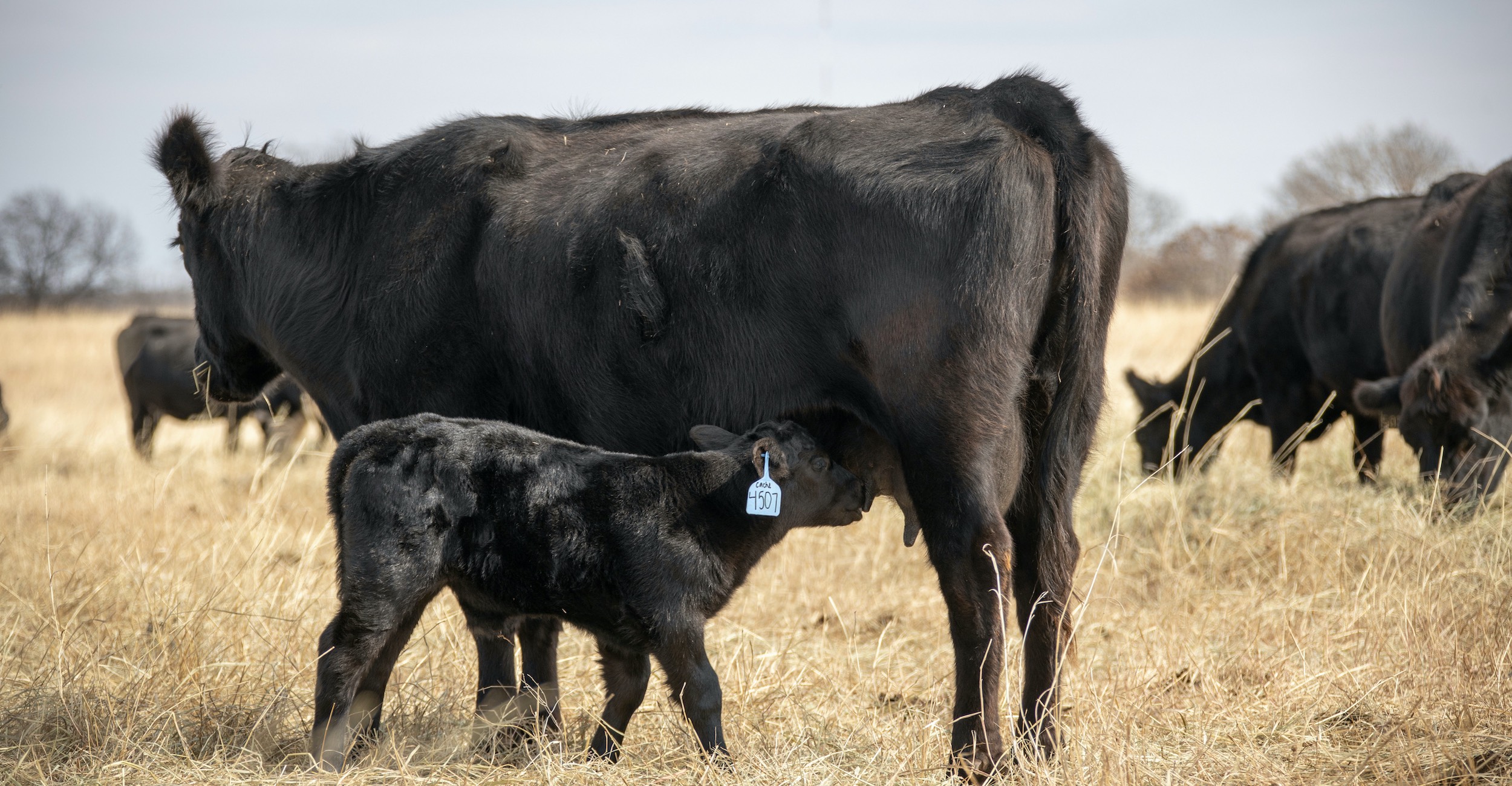
First feeding for the future: Colostrum
Tuesday, April 6, 2021
Every calf represents a large investment. The first few hours of a calf’s life can determine whether that newborn thrives into adulthood. Feeding for a calf’s future health begins with colostrum, which contains the building blocks for long-term productivity.
Colostrum contains concentrated levels of antibodies, critical to a calf reaching its full potential. It also contains more total solids, higher fat and more protein than regular milk. A good source of vitamins A and E, colostrum also contains developmental hormones that can benefit maturity benchmarks. Components of colostrum help signal the newborn to enhance feed efficiency, improve nutrient utilization, and stimulate appetite. Studies have shown these benefits include higher average daily gains and higher weaning weights. Research also indicates colostrum influences a calf’s health later in life and can lead to enhanced feedlot and reproductive performance.
Through colostrum, a calf receives passive immunity to help protect it from diseases early in life, drastically decreasing its risk of diseases including fatal ones. The cow’s health affects the quality of colostrum, making good nutrition and vaccines vital. Age and genetics also influence quality. Generally, colostrum quality is less in heifers as compared with mature cows.
Although a thick yellow cream-like appearance is a good visual indication, IgG antibodies can be measured in the colostrum to quantify quality. It is generally assumed that if IgG levels are adequate, the other colostrum components are, too.
It is essential that calves receive quality colostrum as soon as possible following birth. After six hours of age, the calf’s intestine begins to lose the ability to adequately absorb colostral components. Virtually no intestinal absorption of antibodies occurs after 24 hours of age.
A calf is always best served by receiving quality cow-sourced colostrum from its mother. However, producers should have replacement options if the calf’s dam cannot be milked. The best option for replacement is most often colostrum from a cow in the same herd. Dairy origin or other outside farm colostrum should only be used if verified to be free of diseases like Johne’s. Commercial quality colostrum replacements are good to have on hand if quality fresh or frozen cow-sourced colostrum is not available. Commercial dry preparations should be labelled for replacement, not just supplementation.
If an otherwise healthy cow loses a calf at birth, producers would be wise to milk her to obtain the unused colostrum. Colostrum retains its many qualities only when frozen. Fresh colostrum can be stored putting a quart amount in a gallon-size freezer bag. When storing, be sure to leave space in the bag to allow for expansion. Bags can easily be stored flat in a deep freezer. Refrigerator-freezer combinations should be avoided as they often have a thaw and freeze cycle.
When thawing the colostrum for feeding, place the freezer bag in warm water to gradually thaw. Do not microwave or use boiling water to heat.
On average, a calf should receive 5 to 6 percent of its body weight in colostrum within the first four to six hours, with a repeated feeding of the same amount four to six hours later. About two quarts of colostrum should be administered to an 80-pound calf at each feeding. Ongoing research supports early colostrum administration is best if delivered by four hours of age. Producers should not wait to administer colostrum if there is evidence the calf has not nursed.
Cleanliness is important when collecting and administering colostrum. Esophageal feeders and bottles can serve as sources of disease if not adequately sanitized.
Feeding for a calf’s health begins with colostrum. Fully fed calves that receive first-rate colostrum will be set up for future success. Producers should discuss the best colostrum options with their veterinarians and develop a treatment plan for newborns.
About the author: Dr. Rosslyn Biggs is an assistant clinical professor at Oklahoma State University’s College of Veterinary Medicine. She earned her DVM degree from Oklahoma State University and is as a beef cattle extension specialist and director of continuing education.
Veterinary Viewpoints is provided by the faculty of the OSU Veterinary Medical Hospital. Certified by the American Animal Hospital Association, the hospital is open to the public providing routine and specialized care for all species and 24-hour emergency care, 365 days a year. Call 405-744-7000 for an appointment or more information.
OSU’s College of Veterinary Medicine is one of 30 accredited veterinary colleges in the United States and the only veterinary college in Oklahoma. The college’s Boren Veterinary Medical Hospital is open to the public and provides routine and specialized care for small and large animals. The hospital offers 24-hour emergency care and is certified by the American Animal Hospital Association. For more information, visit https://vetmed.okstate.edu or call (405) 744-7000.
